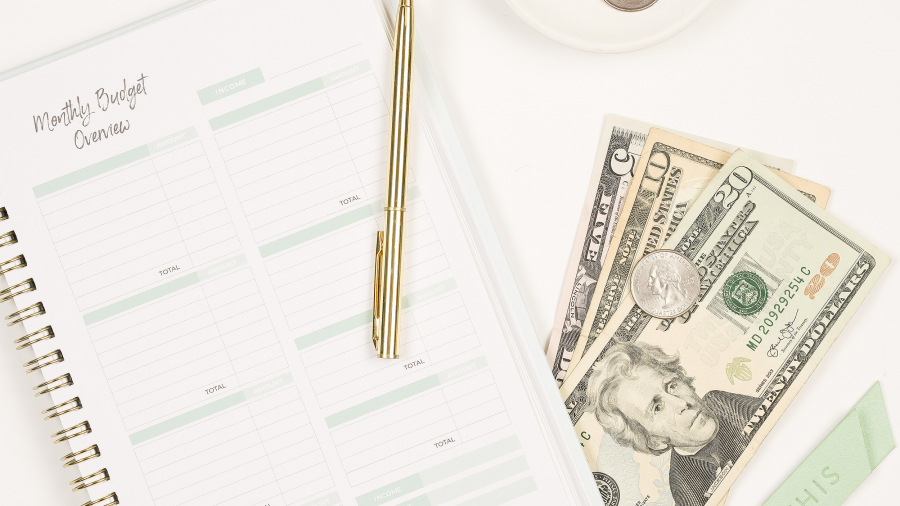Monthly finance habits aren’t just about looking at the numbers – they’re also about changing behaviors to proactively make smarter decisions that will ultimately affect your bottom line! You should know what you made, spent and saved every single month so you can understand how your business is doing.
Because here’s the #truth:
There is such a thing as a bad surprise, especially when it comes to your business finances.
Imagine…
Every month, you’re feeling better and better about your business’s progress.
You’re making more sales than the previous month and even started growing your subscriber list!
But then it happens: A surprise that ruins everything.
You get slapped with a problematic charge or lose out on some additional revenue because of an oversight in billing. The news weighs heavily on your shoulders. How could this possibly happen? Everything was going so well!
Was it an oversight because of poor forecasting, with you not accounting for this possible charge?
Perhaps you fell short in some area of your business? Or maybe the competition was more aggressive than you thought they would be?
Things like this happen in business, but there’s one thing you can always do to keep your financial outlook clear:
Make your goals a monthly habit.
Not quarterly.
Not annually.
MONTHLY.
If you want to stay on top of your business finances, then you need to keep an eye on how much cash you have in the bank EVERY MONTH.
If you want to stay ahead of your taxes, then you need to make sure you are tracking how much money your business made EVERY MONTH.
If you want to stay on top of your bills, etc., then you need to make sure that sales are forecasted EVERY SINGLE MONTH (preferably before the end of the month).
It’s easy to get sidetracked with so many responsibilities, so proper planning is vital to keep your business running smoothly.
Click here to learn more about how you can start designing your own monthly finance routine.
Making your financial goals part of your monthly habit means doing the following:
You can take control of your business finances by implementing good + consistent monthly finance habits. And it’s not as hard as you think! Here are 3 monthly habits that you can start practicing today.
1. Do your bookkeeping.
Updating your books should be done at the end of every month or even weekly, if you’re a solopreneur. Review your bank statements and reconcile them. Make sure the numbers add up!
You can read more about how to do better bookkeeping here: How to Improve Your Bookkeeping in Three Steps
2. Review your Profit & Loss statement and key metrics.
A monthly P&L review will help you make sure your income is growing and that you’re on track to achieving your financial goals.
Here’s a simple way of doing it:
- Take a look at the numbers for last month.
- Is it higher or lower than what was forecasted?
- If they’re higher, then great! This means that your business is making more money than anticipated.
- If those numbers are lower, though…it could mean that projections were off or that something unexpected happened (e.g., a client backed out from a project).
In either case, this would be an opportunity to dig into the details and find out where things really went wrong so you can do better next month.
Check out this podcast episode where I talk about what goes on behind-the-scenes of a CFO meeting, what’s a P&L statement, and how measuring this metric is key to better forecasts: https://100degreesconsulting.com/episode-34/
3. Don’t forget to update your projections for the rest of the year.
Forecasting is every entrepreneur’s best friend. That’s why you need to make sure your numbers are forecasted every single month!
Doing so will help you figure out how much cash you need to have in the bank NEXT MONTH before everything else comes up (like taxes). We usually do this BEFORE the end of every month.
If you’re having trouble with this concept, start SUPER small – maybe use 2-3 months’ worth of expenses as a benchmark. Then grow that number slowly over time until you find something that feels comfortable for your business. That way, you not only prepare for them, but also help ensure your bank account has enough cash to cover even surprise expenses.
Questions to ask yourself when forecasting:
- How much can you spend next month?
- 2 months from now?
- 3 months from now?
- What are the specific expenses that need to be accounted for BEFORE they come up?
It all comes down to this: If you don’t plan ahead and make your financial goals a MONTHLY HABIT, then you won’t achieve them no matter how big or small they are.
3 BONUS TIPS FOR BETTER MONTHLY FINANCE HABITS:
Set financial goals that are measurable and timely. If you want to reach $500k in sales by year-end, then break down how many sales per month it will take to get there.
Set realistic expectations, so you don’t sabotage your progress. Let’s say you want to grow your clientele by 10% each month. If that doesn’t seem possible, then adjust the goal accordingly: 5%, 7%, etc.
Perform an inventory count to make sure you don’t run out of any supplies, you have enough hours to complete a project, etc.
Conclusion:
Proper planning is necessary to keep things running smoothly behind-the-scenes.
In order for you to achieve your goals, have a monthly finance habit that includes:
- Doing your bookkeeping.
- Reviewing your Profit & Loss statement and key metrics.
- Updating your projections for the rest of the year.
By working these three things into YOUR monthly routine ahead of time, they’ll become second nature. Before long, instead of feeling stressed about it all, you’ll know what is coming each month so there’s no “surprise!” when it comes to your business’s numbers.


























